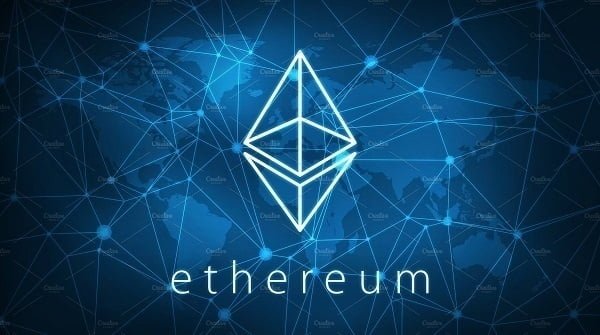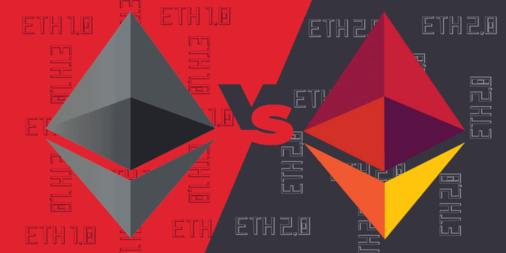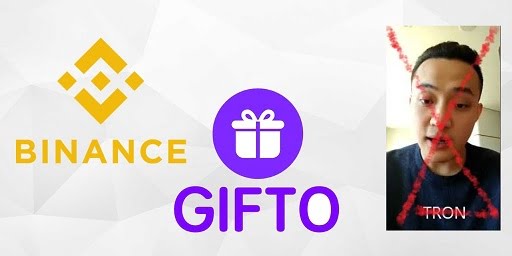Ethereum
Ethereum: Revolutionizing Blockchain and Smart Contracts
In the world of cryptocurrency and blockchain technology, Bitcoin is widely recognized as the first digital currency, but it is Ethereum that has introduced a new paradigm, making significant strides beyond just being a digital asset. Ethereum, launched in 2015, has transformed the way developers approach blockchain, bringing forward the idea of smart contracts and decentralized applications (dApps). It has become a foundational platform for blockchain-based projects, supporting a wide range of decentralized systems, from financial services (DeFi) to digital art (NFTs) and beyond. In this article, we will explore what Ethereum is, how it works, its key features, and its impact on the digital economy.
What is Ethereum?
Ethereum is an open-source blockchain platform designed to enable the creation and execution of decentralized applications (dApps) and smart contracts. While Bitcoin’s primary use case is as a store of value or digital currency, Ethereum expands the scope of blockchain technology, allowing developers to build a variety of applications that run without the need for a centralized server or intermediary.
The concept of Ethereum was proposed by Vitalik Buterin in late 2013, who was then a young programmer and researcher in the cryptocurrency space. He saw the limitations of Bitcoin’s blockchain, particularly in terms of its restricted functionality, and envisioned a blockchain that could support more complex applications beyond simple monetary transactions.
Ethereum’s development was funded through an initial coin offering (ICO) in 2014, which raised $18 million—one of the largest crowdfunding campaigns at the time. In July 2015, the first version of Ethereum, known as “Frontier,” went live, and the platform quickly gained traction for its novel features and open ecosystem.
How Ethereum Works
At its core, Ethereum is a blockchain-based platform, just like Bitcoin, but it is designed to be more versatile. The Ethereum network operates with its own cryptocurrency, called Ether (ETH), which is used to power transactions, pay for computing resources, and incentivize participants within the network.
One of Ethereum’s most significant innovations is the introduction of smart contracts. A smart contract is a self-executing agreement coded into the blockchain that automatically enforces the terms of the contract when certain predefined conditions are met. For example, a smart contract could automatically release funds from one party to another once a service is rendered, without the need for a third-party intermediary like a lawyer or a bank. Smart contracts are immutable and transparent, meaning once they are deployed, they cannot be changed, and all participants can verify their terms.
Ethereum also introduces decentralized applications (dApps), which are applications that run on the Ethereum blockchain rather than on a centralized server. These applications leverage smart contracts to automate processes and make them tamper-proof. Some well-known dApps include decentralized finance platforms (DeFi), games, and marketplaces for non-fungible tokens (NFTs).
Another key feature of Ethereum is gas, a unit used to measure the computational work required to perform a transaction or execute a smart contract on the Ethereum network. Gas fees are paid in Ether and incentivize miners (or validators, in Ethereum 2.0) to process transactions and secure the network.
Ethereum 2.0 and the Transition to Proof of Stake
One of the most important developments in Ethereum’s history is its transition from a Proof of Work (PoW) consensus mechanism to Proof of Stake (PoS). This upgrade, known as Ethereum 2.0 (or “Eth2”), aims to address several issues with the current network, including scalability, energy consumption, and transaction fees.
Currently, Ethereum uses Proof of Work, where miners compete to solve complex cryptographic puzzles in order to validate transactions and secure the network. This process requires massive amounts of computational power and electricity, making it environmentally unsustainable and costly. Bitcoin and Ethereum both use PoW, but as Ethereum’s popularity grows, the network has become congested, leading to high gas fees and slower transaction speeds.
Ethereum 2.0, which is being implemented in phases, aims to replace PoW with PoS, where validators are chosen to create new blocks and confirm transactions based on the amount of Ether they hold and are willing to “stake” as collateral. PoS is more energy-efficient than PoW because it does not require intensive computational work. Validators are incentivized to act honestly by the possibility of losing their staked Ether if they are caught attempting to manipulate the system.
Additionally, Ethereum 2.0 introduces shard chains, which are smaller chains that allow for parallel transaction processing, greatly improving scalability. This will enable the Ethereum network to handle a much higher volume of transactions, making it more efficient and cost-effective.
Key Features of Ethereum
Smart Contracts: As mentioned, Ethereum allows developers to create smart contracts that automate transactions and agreements without relying on centralized authorities. This has made Ethereum a popular platform for DeFi (decentralized finance) applications, which aim to replicate traditional financial services like lending, borrowing, and trading without the need for banks.
dApps (Decentralized Applications): Ethereum’s ecosystem enables developers to create decentralized applications that run on the blockchain, making them censorship-resistant and transparent. These dApps span various sectors, including finance, gaming, supply chain management, and healthcare.
Ether (ETH): Ether is the native cryptocurrency of the Ethereum network. It serves as a means of transaction and an incentive for miners or validators. Ether is also used to pay for transaction fees, or gas, on the network, with fees fluctuating based on network demand.
Decentralized Finance (DeFi): Ethereum has become the backbone of the DeFi movement, which seeks to create financial systems that are open, permissionless, and decentralized. DeFi platforms built on Ethereum enable users to borrow, lend, trade, and earn interest on their assets without traditional financial intermediaries.
Non-Fungible Tokens (NFTs): Ethereum is also the primary blockchain for creating and trading NFTs, unique digital assets that represent ownership or proof of authenticity of a particular item or work of art. NFTs have gained significant attention in recent years, particularly in the art and entertainment industries.
Ethereum’s Impact on the Blockchain Ecosystem
Ethereum’s introduction of smart contracts and dApps has had a profound effect on the development of blockchain technology and the broader digital economy. While Bitcoin remains the dominant cryptocurrency in terms of market capitalization and use as a store of value, Ethereum’s flexibility and programmability have made it the go-to platform for developers seeking to build decentralized applications.
The growth of DeFi has been one of the most significant impacts of Ethereum. DeFi platforms allow individuals to access financial services without relying on traditional banks. These platforms use Ethereum’s smart contracts to facilitate decentralized lending, borrowing, yield farming, and insurance. DeFi has democratized access to financial services, enabling individuals from anywhere in the world to participate in the global economy.
Similarly, the rise of NFTs has further cemented Ethereum’s role as the leading blockchain for digital assets. NFTs have allowed creators to tokenize their work, giving them more control over intellectual property and providing a new way to monetize their creations. While the NFT market has experienced periods of volatility, the underlying blockchain technology continues to evolve, with Ethereum leading the charge.
Challenges Facing Ethereum
Despite its success, Ethereum faces several challenges that could impact its future growth. One of the biggest concerns is scalability. Although Ethereum 2.0 aims to solve scalability issues, the transition is a complex and gradual process. Until it is fully implemented, Ethereum’s network may continue to experience congestion, leading to high gas fees and slower transaction times.
Another challenge is competition from other blockchains. While Ethereum remains the most widely used platform for decentralized applications, other blockchains, such as Binance Smart Chain, Solana, and Polkadot, have emerged as alternatives. These blockchains offer lower fees and faster transaction speeds, posing a challenge to Ethereum’s dominance.
Conclusion
Ethereum has revolutionized the blockchain landscape by introducing smart contracts, decentralized applications, and decentralized finance, making it a driving force behind the broader adoption of blockchain technology. With its ongoing transition to Ethereum 2.0 and its role in powering NFTs and DeFi, Ethereum continues to be at the forefront of the digital revolution.
However, challenges remain, particularly regarding scalability and competition from other blockchain platforms. As Ethereum continues to evolve, it has the potential to reshape industries ranging from finance to art, creating a more decentralized, transparent, and inclusive digital economy.

High Gas Price is Killing Large-scale Ethereum Projects
Andrey Zamovskiy from Ambisafe has raised his concern on the Ethereum forums about the rising gas price. Ambisafe is a company that created the first live Ethereum currency, Elcoin and is currently building the next government voting system for Ukraine using the Ethereum blockchain. According to Andrey large-scale decentralized applications need fast confirmation times and […]
read more
Ethereum Releases Final Specifications for ETH 2.O
Ethereum releases ETH 2.0 spec version 0.1, which centres on the integration of IETF BLS standards, as well as minor cleanups and optimizations as part of the profound and much-anticipated reorganization of files and directories in this final release. Ethereum 2.0 Coordinator, Danny Ryan, said that the V.O.10.0 marks a Phase 0 stable target for […]
read more
Using a trust network to create a community currency in Hawaii
This is a guest post by All Infinite first published on Crypto LA.. Aloha! My name is Daniel Levy. My partner, Charlene, and I recently moved to the Puna District on the Big Island of Hawaii. I have been enthusiastically using the website Village.cc to create a trust network for the past few years, and […]
read more
Gifto exits Ethereum and migrates to Binance chain (not Tron, sorry Justin)
Remember back in 2017 (and early 2018) when Justin Sun couldn’t stop talking about their so called partnership with Gifto? Remember Justin announcing them running for Tron SR? Remember the hype and the announcements of announcements? Just another day in the crazy world of fake Tron promises with nothing to back them up. Clearly Gifto […]
read more
Ethereum foundation announces May 2018 Cohort of EF Grants
In an article on their blog, the Ethereum Foundation have announced the allocation of the latest round of grants for dapp and smart contract developers. With the grants the Etheurm foundation aims is to empower developers with best-in-class R&D, developer experience, and education. Ethereum Team May 2, 2018: “Thank you all for applying, and we’re excited […]
read more
Ethereum and XRP Price Analysis: Strong technical analysis says what?
“Oh my goodness will somebody please make them stop!” These cries of despair can be heard all over crypto land every time somebody opens up a cryptocurrency news aggregator. “I wonder what is going on in the cryptocurrency landscape today” we ask ourselves… “Any major breaking news? New partnerships for my favourite crypto? A crypto […]
read more